Curbing Pollution for Clean Water
A summer storm sends sheets of rain flowing through the streets, creating small rivers running swiftly along the curb line. The water flows into storm drains and a network of pipes below ground, eventually dumping into our lakes and the Mississippi River, carrying with it pollutants like leaves, grass clippings, trash, dirt, and motor oil. Capitol Region Watershed District (CRWD) has been working with residents since 2005 to reduce the amount of polluted street runoff by planting curb-cut rain gardens with homeowners, businesses, schools, and community organizations.
In a curb-cut rain garden a carefully placed break in the curb diverts the water when it rains from the street into a beautiful garden filled with native plants. During a rainstorm, water pools in the bottom of the garden where it is absorbed by the deep-rooted plants. The water soaks into the ground as the sky clears and the flowering native plants of the garden are visited by a variety of pollinators. The water is cleaned of pollutants and nutrients as it moves through the soil. Each one of these curb-cut rain gardens can soak up street runoff and help reduce local flooding while improving water quality in nearby lakes.
Helping protect Como Lake and Lake McCarrons
In summer 2021, the Cities of Saint Paul and Roseville, CRWD and Ramsey County Soil & Water Conservation Division (RCSWCD) constructed 21 new curb-cut rain gardens in the areas that drain to Como Lake and Lake McCarrons. In 2019, CRWD and its partners, and the City of Roseville installed fourteen curb-cut raingardens in the area that drains to Lake McCarrons subwatershed. These gardens help improve water quality by soaking water into the ground and stopping pollutants that fuel algae blooms from flowing to the lakes.
Combined, the 35 curb-cut rain gardens will prevent over 1.4 million gallons of water from entering storm drains and flowing to Como Lake and Lake McCarrons each year. These curb-cut rain gardens are gardens are supported in part by a Targeted Watershed Program (TWP) grant funded through the Minnesota Clean Water, Land and Legacy Amendment and administered by the state’s Board of Water and Soil Resources (BWSR). The TWP grant has supported a variety of projects and programs designed to help improve water quality in Como Lake and protect Lake McCarrons.
Curb-Cut Rain Garden Installation
The process for the curb-cut rain gardens constructed in 2021 began in 2018 by identifying suitable sites. Residents with the District 10 Community Council (Como) helped scout potential sites with training from CRWD staff. What makes an ideal site for a curb-cut rain garden? Typically, the selected sites are low areas where the maximum amount of water from the street will collect before reaching a storm drain. Flat boulevards that are free of large trees and established plantings are ideal. Staff from CRWD and RCSWCD then confirmed the scouted locations and secured interest from property owners. Follow along with the steps of creating a curb-cut rain garden.
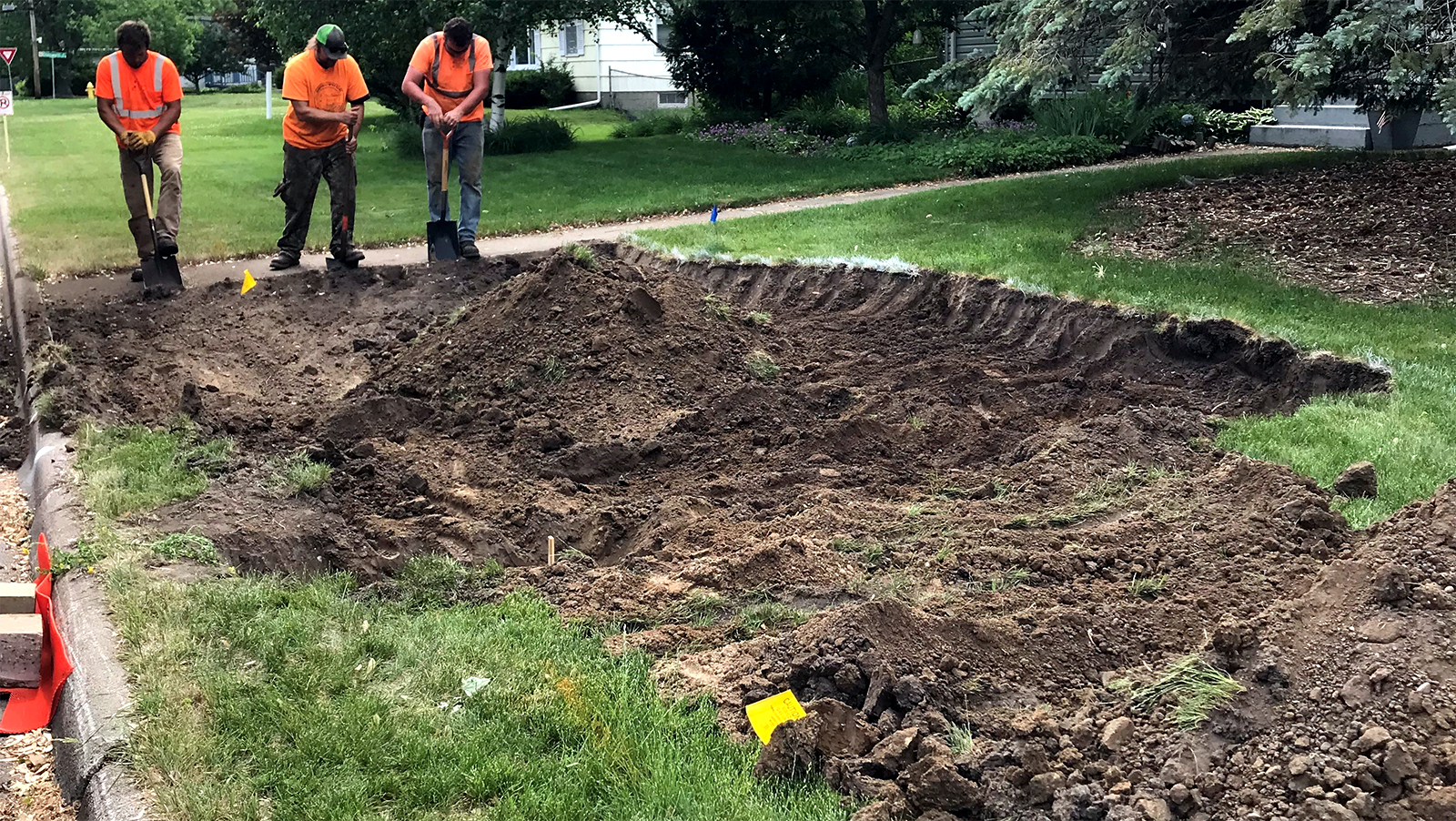
1. All utilities on the site are located and marked. This is an important safety step. In Minnesota, contact Gopher State One Call (GSOC) before starting any excavation project.
2. The site is prepared by removing the sod.
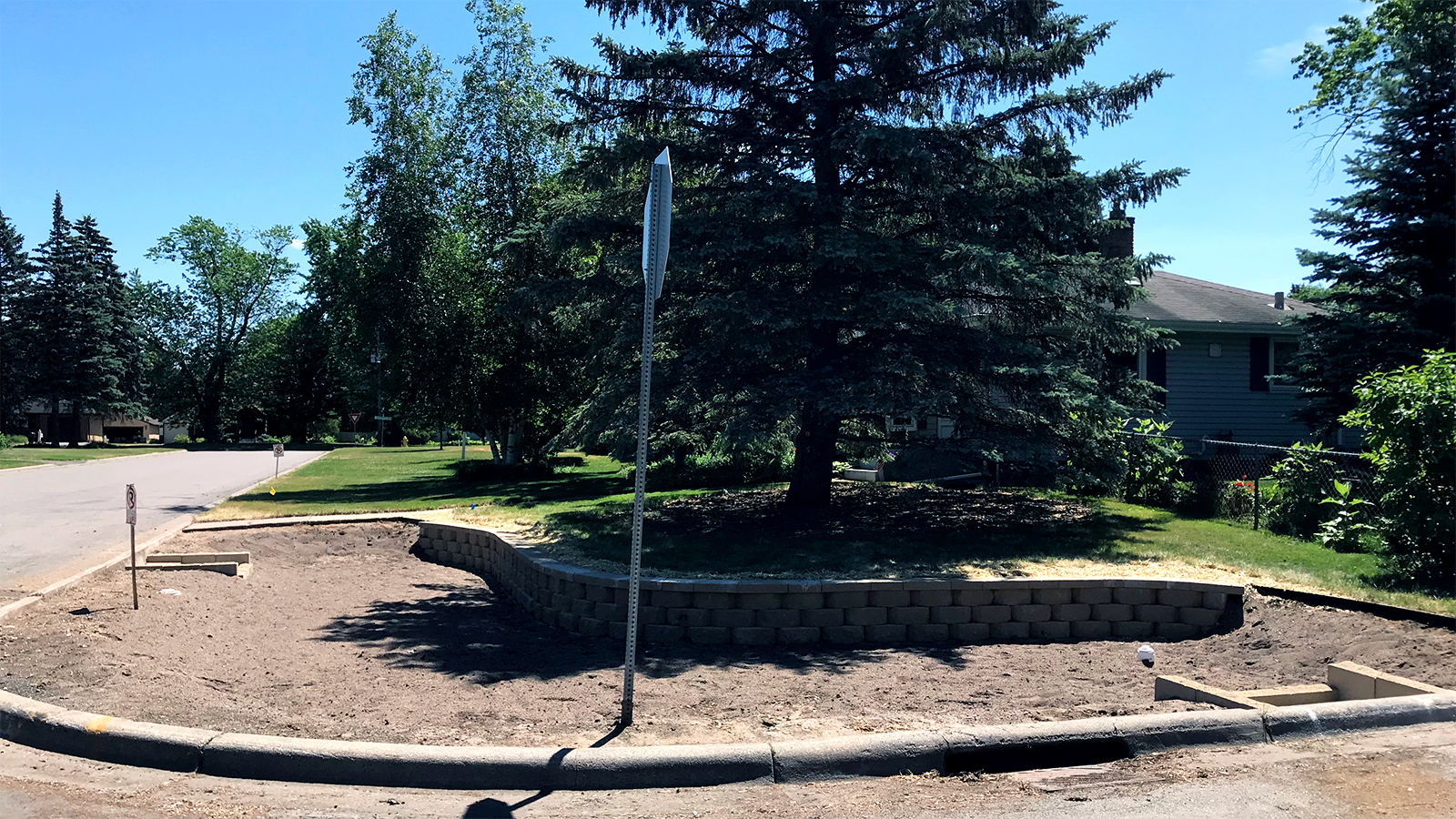
3. The basin is excavated and shaped.
4. Amended soils are added to improve draining and support plants, and the slopes of the basin are graded.
5. A pretreatment sump is installed along with any other structural and functional design features like retaining walls and underdrains (photo above). A pretreatment sump is located at the inlet of a curb-cut and collects dirt, sand and debris before it enters the rain garden (photo below shows a pretreatment sump in a completed rain garden).
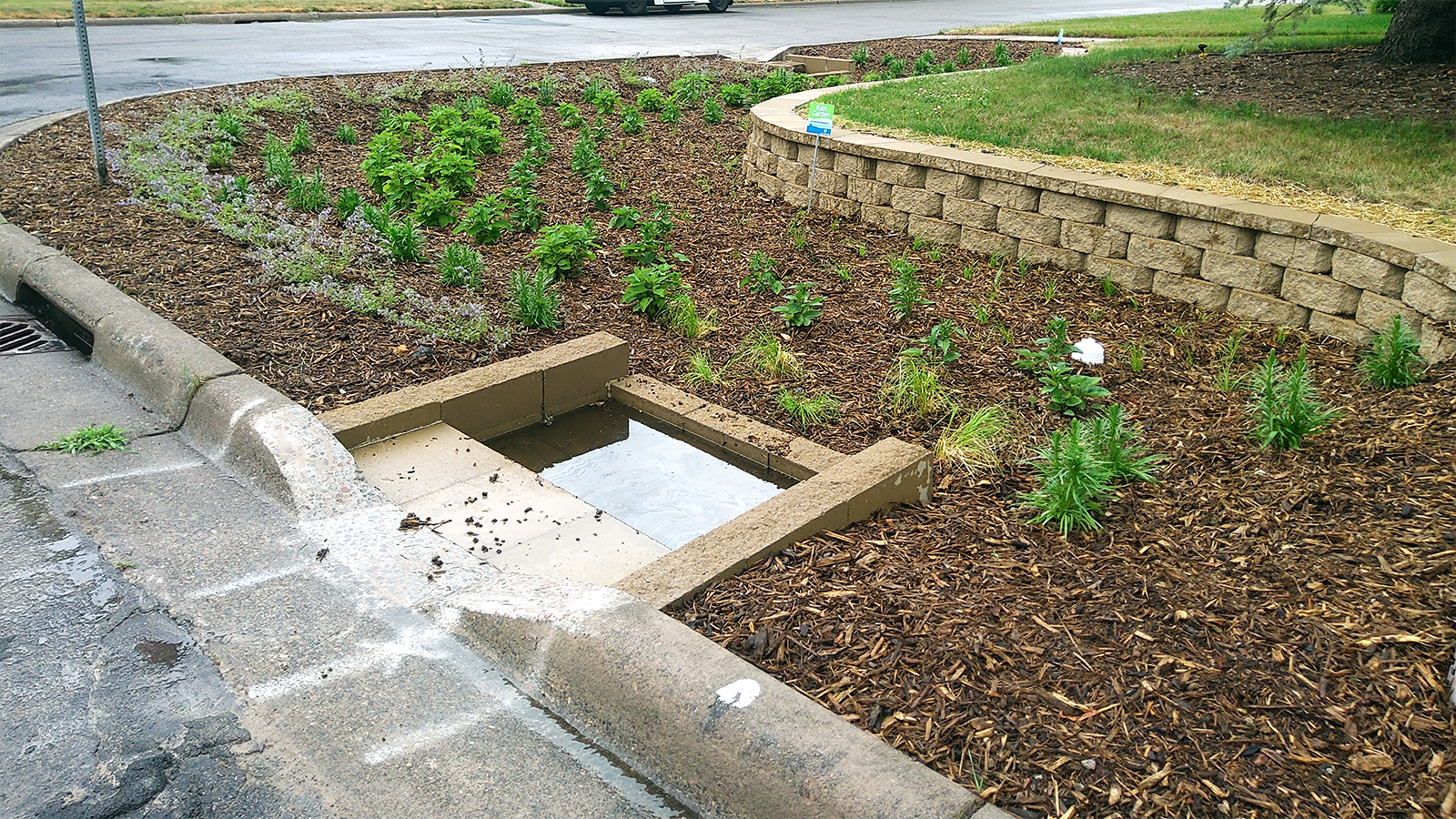
6. Mulch is added to cover the soil and plants are planted.
7. Once the garden is planted and ready to take on water the curb is sawed for the inlet.
8. The new plants are watered frequently for the first year until the roots are established.
9. Ongoing maintenance includes weeding, cleaning the pretreatment sump and replacing plants as needed (photo below shows the completed rain garden).
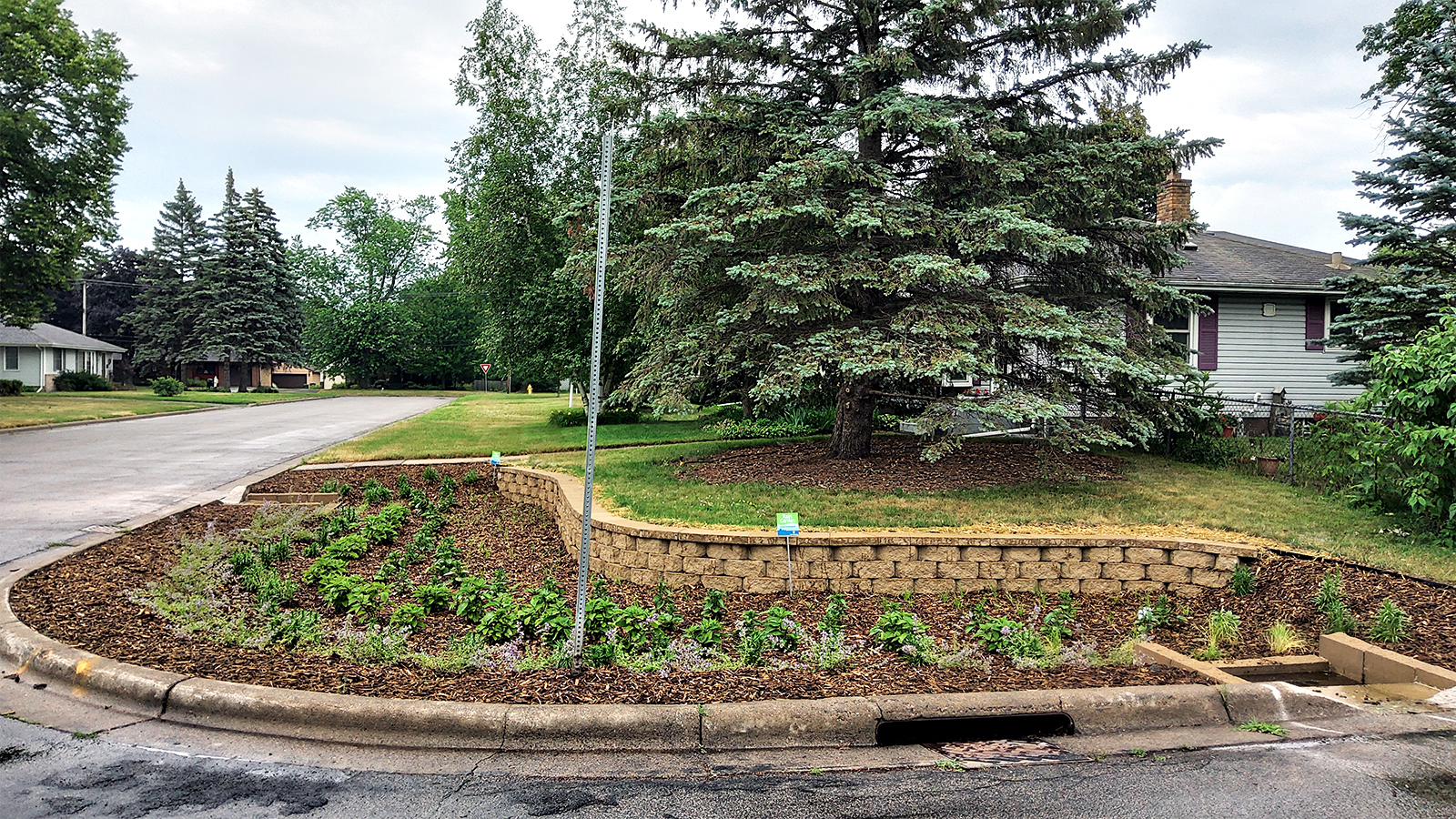
Rain Garden Maintenance
Inlets and the pre-treatment sumps of curb-cut rain gardens can fill with leaves, dirt, and other debris. It is important to keep inlets clear and regularly clean pre—treatment sumps so water can enter. Rain gardens should be weeded as needed throughout the growing season.
Visit CRWD’s Clean Water Projects Maintenance page for more tips.
Subscribe to CRWD’s seasonal maintenance tips newsletter. Each edition will features seasonal tips for maintaining your clean water project, a native plant to consider for your garden and a weed to watch for when caring for your garden.
View the Summer 2021 Maintenance Tips newsletter.
Ways to Help Protect Water
There are many ways residents can help to protect our lakes and the Mississippi River.
Visit CRWD’s stewardship grants page for details on adding a curb-cut rain garden or other clean water project to your site.
Volunteer to clean a nearby storm drain and keep it clear of trash and debris with Adopt-a-drain.org.
Become a Minnesota Water Steward. Developed by Freshwater Society, the Minnesota Water Stewards program is a volunteer program designed to equip community members with the knowledge and skills needed to improve water health at the grassroots level.
Residents near Como Lake can join Como Curb Clean-Ups each fall.
Collect trash and share data with the Mississippi Plastic Pollution Initiative from 1Mississippi.org.
Additional Resources
Check out recent large scale clean water projects to help improve water quality in Como and McCarrons Lakes.
-
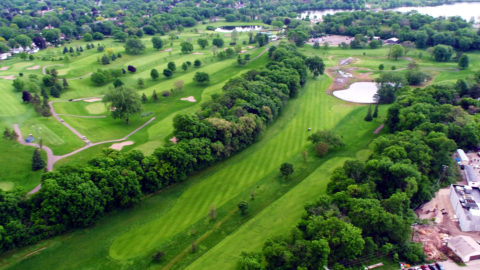
Como Golf Course
Go To Project -
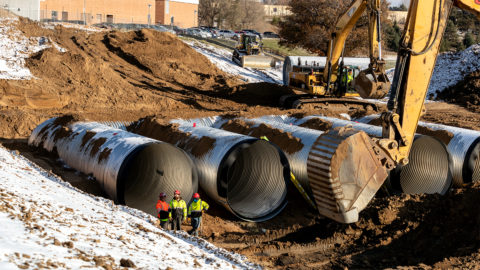
Parkview Center School
Go To Project -
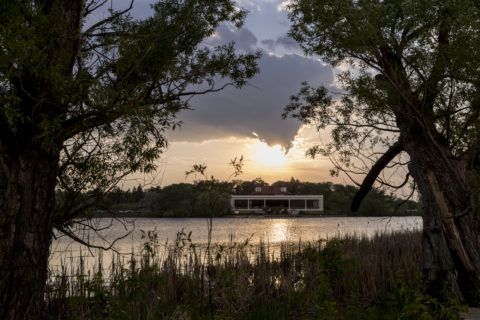
Targeted Watershed Program
Go To Project
